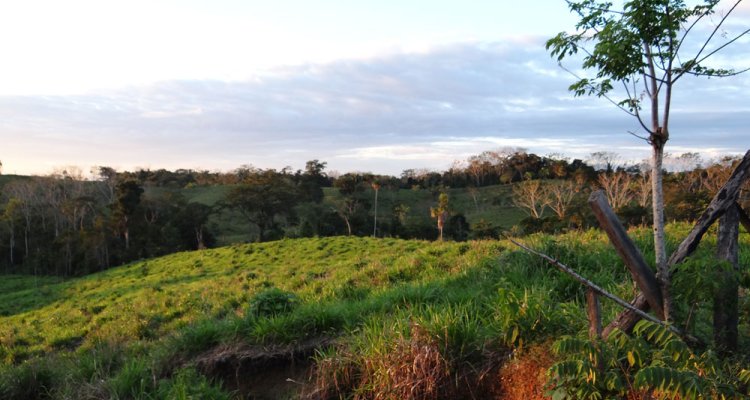
Balances between forest conservation and agricultural production in human-modified tropical landscapes
Human-modified landscapes (HML) emerge as potential areas to conserve biodiversity and maintain ecosystem functions and services. Simultaneously, these sites develop agricultural activities that currently experience a homogenization of crops with high use of inputs (e.g. agrochemicals). The need to conserve in the HML runs counter to the complex reality that exists in these areas, which, at the moment, demands more land for agricultural production.
To integrate these opposing positions, it is necessary to analyse the components of conservation (in remaining forest areas) and production (in agricultural systems) and integrate them to find which landscape structures could allow synergies between conservation and production. To conserve high levels of tree biodiversity, at least 40% of the forest cover is required regardless its spatial configuration. However ecosystems functions and services such as biomass production and carbon storage may need more coverage.
Reconciling conservation and production in human-modified landscapes is possible through integration of management decisions across all scales and all stakeholders.
On the other hand, at least in maize-cropping systems, there is inconsistency between agronomic practices and expected responses in grain yields. Maize cropping systems respond to biophysical factors such as soil quality and thus farmers apply agronomic management decisions in response to biophysical differences in the field which often do not translate into higher yields. Finally, multi-objective simulations based on Pareto-optimal responses provided evidence that there are solution spaces that would allow increasing forest areas and production at the scale of the production system within the HML.
It is possible to increase forest areas and incomes through sustainable intensification practices in agricultural production systems that are initially less intensified whereas increasing forest areas and incomes is only possible through increase of external inputs in agricultural production systems with high intensification derived from chemical inputs. Integration between management decisions across all scales and all stakeholders would allow reconciling conservation and production in human-modified landscapes.
